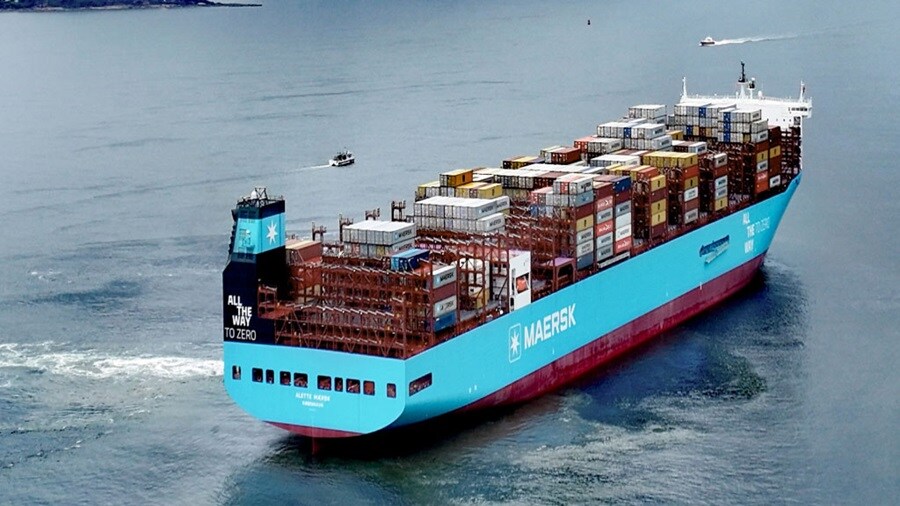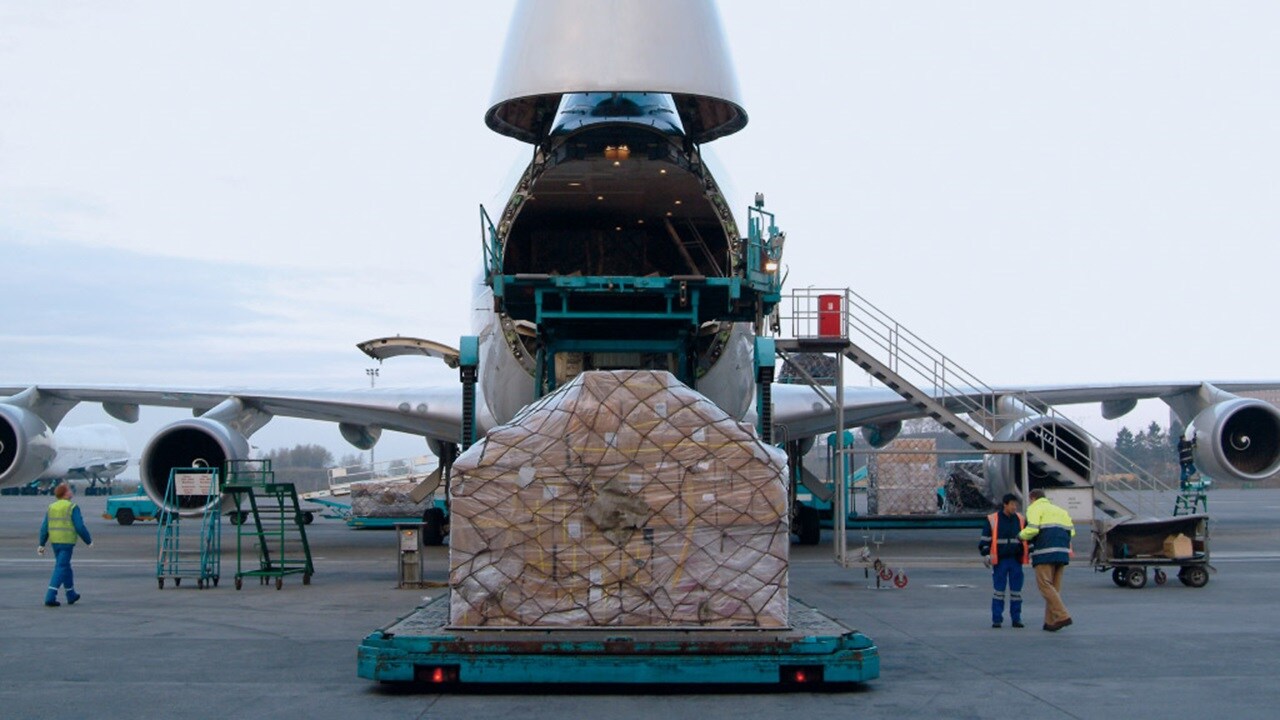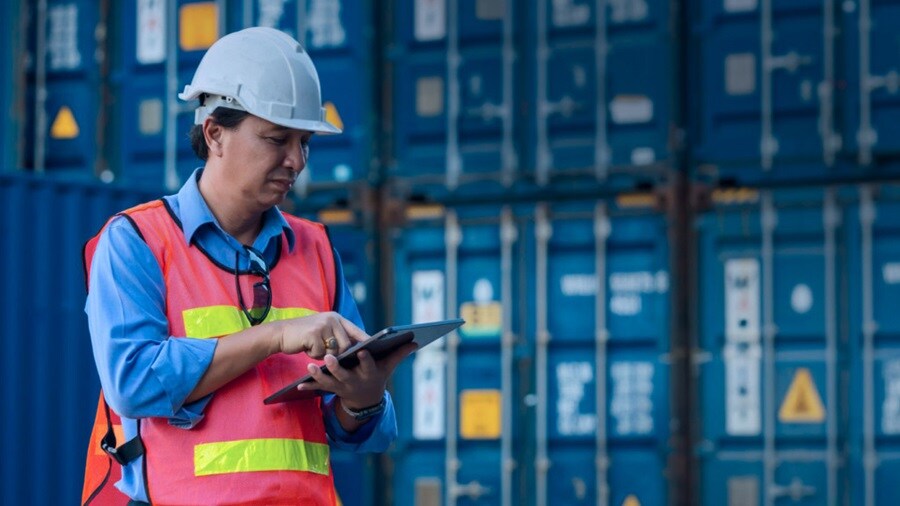As we move into the second half of 2025, global trade remains shaped by shifting tariff landscapes, and geopolitical developments. While uncertainty persists across key markets, Maersk continues to provide stable, reliable logistics solutions across ocean, air, inland, and customs services. In this update, we share the latest developments from across Asia-Pacific, highlight the actions we’re taking to support your supply chain, and outline how we’re helping customers stay agile and resilient in today’s dynamic market environment.
Download the flyer in Chinese language:
Ocean Market Update
Reliable Solutions in a Volatile Market

The ocean freight market continues to navigate volatility shaped by shifting trade policies, geopolitical uncertainty, and cautious market sentiment. Container volumes on Asia’s key export corridors remain steady, but many customers are reassessing shipment timing in light of the potential reintroduction of US-China tariffs in August, making Q3 planning more complex.
Network Stability and Service Continuity
Against this backdrop, Maersk remains focused on delivering schedule reliability and operational stability. While up to 40% of sailings across the wider market were blanked during Q2, Maersk maintained network reliability above 90% and avoided any service gaps.
Our network continues to respond dynamically to shifting demand, with additional capacity deployed as needed to maintain consistency across key trade lanes.
Middle East Update – Ongoing Monitoring and Operational Adjustments
In light of recent developments in the Middle East, Maersk has resumed vessel calls and cargo acceptance to the Port of Haifa following a period of temporary suspension. This decision follows signs of de-escalation and is based on ongoing safety assessments.
Operations at the Port of Ashdod remain stable, and the Strait of Hormuz continues to be navigable. Our teams are monitoring maritime advisories closely and are prepared to adapt operations if conditions change. We encourage customers to sign up for ETA notifications to stay informed of shipment-specific updates. For the most current information on the Middle East situation, including FAQs and customer guidance, please refer to our dedicated information page: Maersk Middle East situation update.
Air Freight Market Update
Shifting Trade Patterns Sustain Asia-Pacific Air Cargo Momentum

Asia-Pacific’s air freight market is being shaped by a mix of regional volume shifts, policy uncertainty, and global supply chain adjustments. Export demand from Greater China remains soft, but markets like North East Asia and the Mekong region have seen rising volumes as sourcing diversifies. Across the region, available capacity remains sufficient for current demand.
According to AAPA, air cargo demand in Asia-Pacific rose 4.9% YoY in April, outpacing capacity growth and lifting load factors to 61.5%. Globally, IATA reported a 5.8% YoY increase, supported by seasonal demand and proactive shipping to avoid tariffs.
The macro environment is further influenced by the ongoing US-China tariff suspension. While volumes rebounded following the temporary tariff pause and reduction, questions remain around whether these measures will be extended or revised. Airlines and shippers continue to monitor the Middle East conflict and its impact on Asia–Europe routes, where flight diversions or cancellations could pressure capacity. A separate regional flashpoint, the Cambodia-Thailand border tension, has also reduced border operational hours. While impacts remain limited for now, escalation could affect cross-border trucking and transit times into Thailand.
Resilient Performance Despite Policy and Capacity Shifts
Maersk is responding to market dynamics with enhanced connectivity and operational agility. We have launched twice-weekly airfreight services between Hangzhou (HGH) and Santiago, Chile (SCL), strengthening the connections between Greater China and Latin America markets. We have also successfully executed shipments of temperature-sensitive perishable cargo, such as salmon from Billund (BLL) to Hangzhou, demonstrating our capability in cold-chain air logistics.
Maersk continues to work closely with airline partners and our Own Controlled Flight Operations (OCFO) to ensure the right uplift capacity is secured across strategic corridors. We are also engaging with customers to understand individual needs and jointly develop tailored airfreight solutions.
Our teams are working closely with airline partners and customers to secure the right uplift across strategic corridors. With uncertainty around the US-China tariff outlook and geopolitical risks in the Middle East and Southeast Asia, early planning and visibility remain key to minimising rate exposure and protecting lead times.
Maersk continues to monitor capacity and market conditions closely, preparing for a potential demand uptick into Q4, should macroeconomic conditions or policy shifts trigger a renewed shipping surge.
Inland Update
Strengthening Capacity and Flexibility Across the Asia-Pacific

Asia-Pacific’s inland logistics networks are seeing stable demand and continued investment in infrastructure. In Greater China, recovery in shipping activity has been supported by the easing of US tariffs and steady capacity across road, rail, and barge transport. The regional cold-chain logistics market is also expanding rapidly, projected to reach USD 168 billion by end-2025.
Backed by RCEP and Belt and Road investments, freight connectivity across China, India, Southeast Asia, and Australia continues to improve, though challenges remain. Regulatory tightening in markets like Vietnam is increasing trucking costs and causing delays in key corridors.
Maersk is responding with new inland offerings including a barge service from Jiaxing to Ningbo and a sea-rail connection from Chongqing to key export ports. For overweight energy storage containers, we’ve launched combined container and bulk shipping options to enhance flexibility and compliance.
Meeting Demand with Flexible, Integrated Solutions
For customers, Maersk’s integrated inland services deliver greater visibility, speed, and control. By connecting inland, ocean, and air logistics, we reduce handovers and simplify end-to-end operations. Our teams provide on-the-ground support with route planning, documentation, and compliance, ensuring supply chain continuity even during disruption.
Inland logistics across APA is set for continued growth. Investment in multimodal corridors, cross-border infrastructure, and digital technologies like IoT and AI will enhance efficiency and responsiveness. Maersk remains committed to delivering future-ready inland solutions that keep your cargo moving seamlessly and reliably.

Customs Market Update
Navigating Tariff Uncertainty with Strategic Support
Tariff and customs challenges remain front-of-mind for exporters across Asia-Pacific. As the 90-day US tariff pause nears its 11 August expiry, businesses face uncertainty over potential cost increases and compliance burdens. China remains a central focus, with renewed tariffs on electronics, steel, and machinery. Meanwhile, Vietnam, Thailand, and other Southeast Asian nations are also under scrutiny due to their role in alternative sourcing strategies.
Customs compliance is becoming more stringent, particularly for US-bound shipments involving sensitive goods such as rare earths. Documentation requirements and inspections have intensified, increasing the risk of disruption.
To help customers navigate these developments, Maersk’s Global Trade & Customs Consulting (GTCC) team is providing tariff impact analysis, sourcing strategy reviews, and country-of-origin support. These services are designed to reduce financial exposure, maintain compliance, and ensure supply chain continuity.
We advise customers to monitor policy changes closely and evaluate their supply chain setup both for immediate impact and long-term strategic shifts. GTCC is ready to support with tailored, operationally practical solutions.
Maersk remains cautiously optimistic but vigilant. Our GTCC experts are closely monitoring developments and are available to support your business with customised solutions. For further information or support, please contact us at gtccapa@maersk.com.
Be Ready for The Mekong Area
The Mekong Delta logistics market is projected to grow from USD 7.8 billion in 2025 to USD 12.5 billion by 2030, at a CAGR of 8.2%. according to the latest Mordor Intelligence Assessment. Investments in road, rail, and inland waterway infrastructure are unlocking efficient freight routes linking production hubs to domestic and export markets.
However, recent events have added complexity. Thailand–Cambodia border closures have disrupted clearance for clients, and an import surge into Thailand from China in May–June caused port congestion, though this is expected to ease in Q3.
In response, Maersk has launched a weekly barge service from LZP Port to Yangon and secured new air volumes through a major RFQ with Nokia Networks. We are also accelerating shipments for solar customers from Vietnam and Thailand to the US, ahead of possible tariff changes.
Corridor Expansion and Tactical Response
Maersk’s Global Trade & Customs Consulting (GTCC) team is actively working with customers across the region to review HS codes, country-of-origin declarations, and compliance strategies in preparation for the 8 July tariff milestone.
Our focus in the Mekong area is clear – we’re enabling manufacturing clusters, supporting rising consumption, and driving corridor expansion with purpose-built logistics solutions. This strategic alignment is unlocking new growth and efficiencies for our customers.
Maersk continues to invest in advanced cold-chain, green freight, and cross-border corridor capacity to support sustained growth in this strategically vital region.
Major Ports Update
| Trade | Less than 1 day | 1-3 days | More than 3 days |
|---|---|---|---|
|
Trade
Asia Ports
|
Less than 1 day
Busan, Dalian, Xingang, Xiamen, Shekou, Yantian, Nansha, Hong Kong, Tanjung Pelepas, Jakarta, Brisbane, Auckland, Melbourne, Tauranga, Sydney
|
1-3 days
Qingdao, Shanghai, Ningbo, Ho Chi Minh, Port Klang, Singapore
|
More than 3 days
|
|
Trade
Rest of World
|
Less than 1 day
Bremerhaven, Rotterdam, Valencia, Jebal Ali, Colombo, Dar es Salaam, Onne, Tema, Lome, Durban, Zanzibar, Pointe Noire, Cape Town, Port Louis, Reunion, Maputo, Oakland, Los Angeles, Prince Rupert, Vancouver, Tacoma, Houston, Norfolk, Baltimore, Charleston, Miami, Newark, Balboa, Lazaro Cardenas
|
1-3 days
Rijeka, Koper, Apapa, Abidjan, Conakry, Djibouti, Savannah
|
More than 3 days
|
Remark: Information is dynamic and subject to change.
Resources and tools to support you
Visit our “Insights” pages where we explore the latest trends in supply chain digitization, sustainability, growth, resilience, and integrated logistics.
Learn what’s happening in our regions by reading our Maersk Global, Europe, North America, and Latin America updates.
Do you find this market update useful? If you haven’t subscribed to Maersk Asia Pacific Monthly Update yet, click the link below and stay posted!
Subscribe to Asia Pacific Monthly Updates
We value your business and welcome your feedback. Should you have any questions on optimizing your cargo flows, please contact your local Maersk professional.
Anything you need, we’re here to help
I agree to receive logistics related news and marketing updates by email, phone, messaging services (e.g. WhatsApp) and other digital platforms, including but not limited to social media (e.g., LinkedIn) from A. P. Moller-Maersk and its affiliated companies (see latest company overview). I understand that I can opt out of such Maersk communications at any time by clicking the unsubscribe link. To see how we use your personal data, please read our Privacy Notification.
By completing this form, you confirm that you agree to the use of your personal data by Maersk as described in our Privacy Notification.


